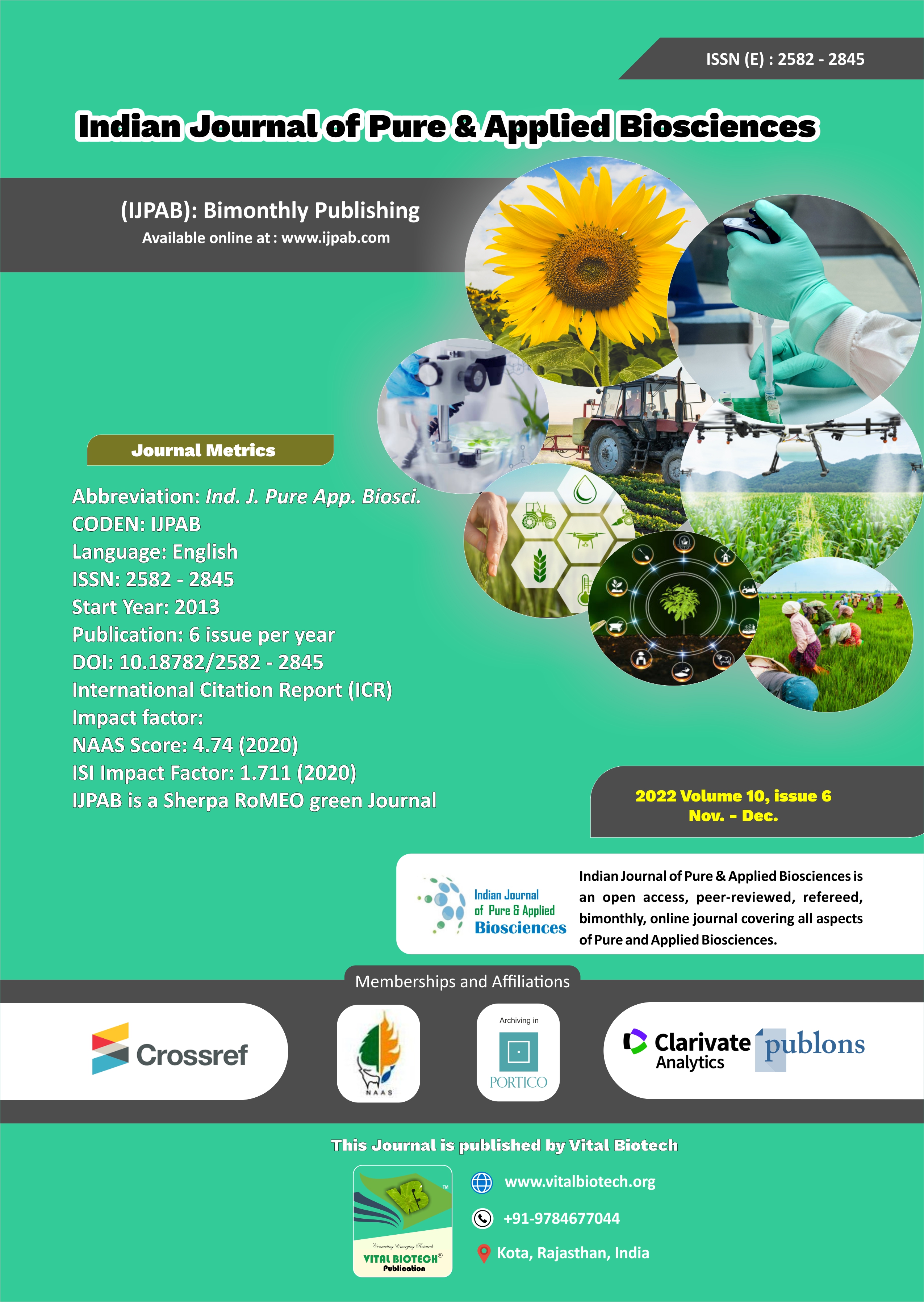-
No. 772, Basant Vihar, Kota
Rajasthan-324009 India
-
Call Us On
+91 9784677044
-
Mail Us @
editor@ijpab.com
Indian Journal of Pure & Applied Biosciences (IJPAB)
Year : 2022, Volume : 10, Issue : 6
First page : (11) Last page : (22)
Article doi: : http://dx.doi.org/10.18782/2582-2845.8857
Prevalence of Tick Species Infesting Domesticated Animals in Pakistan
Ammar Haider1* ![]() , Saba Ayaz2, Amna Rafaaqat3, Ghulam Fatima2
, Saba Ayaz2, Amna Rafaaqat3, Ghulam Fatima2
1Department of Zoology Wildlife and Fisheries, University of Agriculture, Faisalabad, Pakistan
2Department of Biochemistry, Rapha International University, Faisalabad, Pakistan
3Institute of Molecular Biology and Biotechnology, University of Lahore, Pakistan
*Corresponding Author E-mail: ammarhaider4052@gmail.com
Received: 22.09.2022 | Revised: 26.11.2022 | Accepted: 7.12.2022
ABSTRACT
Ticks transmit a variety of pathogens, including viruses, spirochetes, bacteria, rickettsia, protozoa, filarial nematodes, and others, only behind mosquitoes, that result in human and animal mortality. Tick infestation poses severe threats to livestock farming, which plays a crucial role in Pakistan's rural economy. However, more research needs to be done in the study area of Pakistan on the diversity of tick species and the pathogens carried by ticks. This study aimed to determine the prevalence of ticks in Pakistan. A total of 226 tick specimens were collected from 1023 animals (136 sheep and 147 goats, 329 cows, 411 buffaloes), examined in the study area. It showed that total eight species belonging to four genera were collected and identified. The identified species were Dermacentor marginatus, Hyalomma anatolicum, Hy. Dromedarii, Rhipicephalus sanguineus, R. turanicus, R. appendiculatus, R. annulatus and Haemaphysalis punctate. Among collected tick species, Hy. anatolicum was the most widely distributed tick species. The maximum tick prevalence was recorded on buffaloes 87 (38.49%) followed by goats 53 (23.45%), cattle or cows 51 (22.56%) and sheep 36 (15.92%). Male animals were least infested with tick species than female animals while maximum female ticks were recorded in the study area than male. In order to control ticks in the study area, appropriate methods are required.
Keywords: Ticks; Dermacentor; Hyalomma;Rhipicephalus; Haemaphysalis; Pakistan.
Full Text : PDF; Journal doi : http://dx.doi.org/10.18782
Cite this article: Haider, A., Ayaz, S., Rafaaqat, A., & Fatima, G. (2022). Prevalence of Tick Species Infesting Domesticated Animals in Pakistan, Ind. J. Pure App. Biosci.10(6), 17-22. doi: http://dx.doi.org/10.18782/2582-2845.8857


